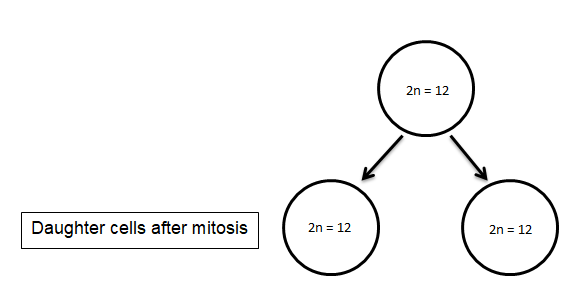Draw the daugher cells (only the daughter cells, not the process) for each situation below & be sure to include whether the cells are diploid or haploid, number of chromosomes and chromatids for each one. cell has a diploid number of 12 (2n=12) a) daughter cells after mitosis b) daughter cell after meiosis I b) daughter cell after meiosis II
Oogenesis
The formation of the ovum (mature female gamete) from undifferentiated germ cells is called oogenesis. This process takes place in the ovaries (female gonads). Oogenesis consists of three stages known as the multiplication phase, growth phase, and maturation phase.
Cell Division
Cell division involves the formation of new daughter cells from the parent cells. It is a part of the cell cycle that takes place in both prokaryotic and eukaryotic organisms. Cell division is required for three main reasons:
Draw the daugher cells (only the daughter cells, not the process) for each situation below & be sure to include whether the cells are diploid or haploid, number of chromosomes and chromatids for each one.
cell has a diploid number of 12 (2n=12)
a) daughter cells after mitosis
b) daughter cell after meiosis I
b) daughter cell after meiosis II
A series of events that occurs in a cell to make it ready for the division is the cell cycle. There are mainly two phases of the cell cycle, interphase, and mitotic phase. Interphase is the longest (18 to 20 hrs) phase of the cell cycle and includes sub-phases such as G1 phase, S phase, and G2 phase. The actual division occurs in the mitotic phase.
There are two types of cell division, mitosis, and meiosis. Mitosis occurs in somatic cells, and meiosis occurs in germ cells to form gametes (sperm and egg).
The meiosis is a reductional division in which both the number of chromosomes and DNA contest changes. Both Meiosis I and II have an equal number and order of phases: prophase, metaphase, anaphase, and telophase.
Mitosis results in two genetically identical daughter cells.
a) Daughter cells after mitosis.

Step by step
Solved in 4 steps with 3 images









